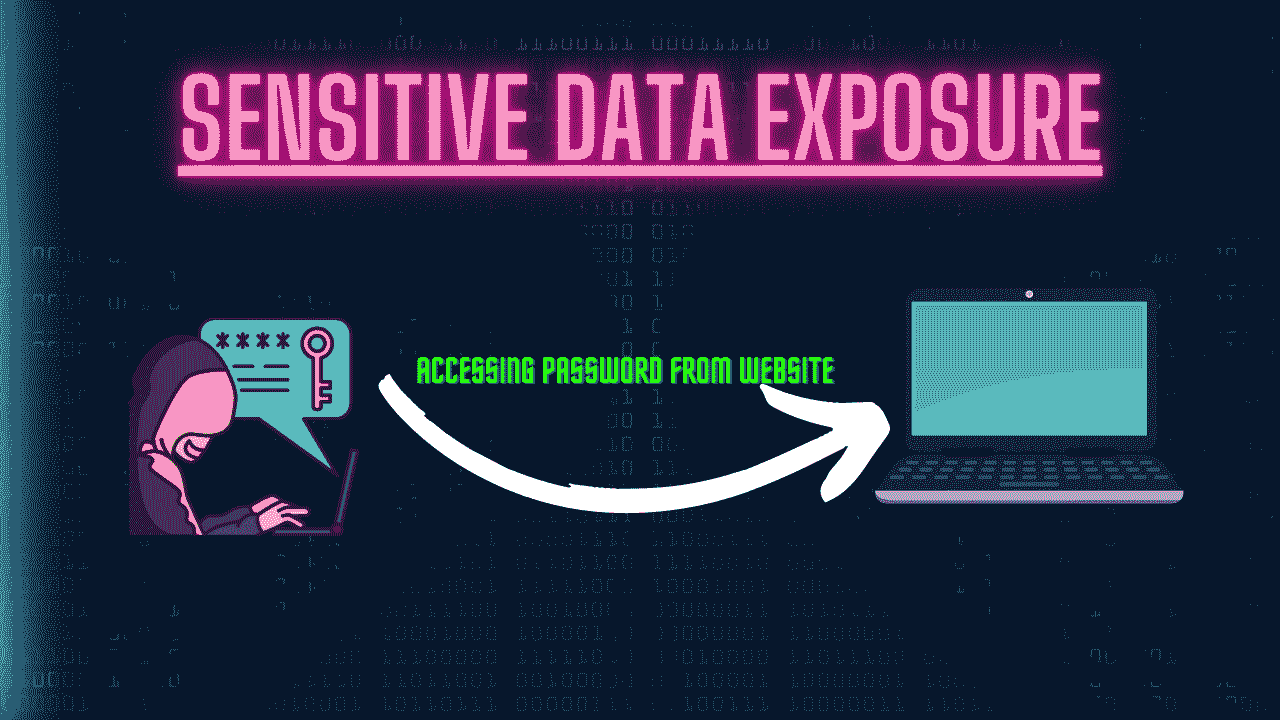In this blog, we will learn about Sensitive Data Exposure which is one of the most important vulnerabilities in Ethical Hacking. We will see what we can do to prevent such vulnerabilities and how they occur. So let’s get started with the blog.
Table of Contents
- Introduction to Sensitive Data Exposure
- Examples of Sensitive Data Exposure
- Prevention of Sensitive Data Exposure
- Recent Articles on Computer Networks
- Recent Articles on Linux
Introduction to Sensitive Data Exposure
Sensitive data exposure is a critical security issue that ethical hackers often encounter during their assessments. It refers to the unauthorized or unintended disclosure of confidential or sensitive information, making it accessible to unauthorized individuals or systems. This vulnerability can occur due to various factors, including insecure coding practices, misconfigured systems, weak access controls, or inadequate encryption.
As an ethical hacker, identifying and exploiting sensitive data exposure vulnerabilities is an essential part of the assessment process. By doing so, they can help organizations uncover potential weaknesses in their systems and take appropriate measures to mitigate the risk.
Examples of Sensitive Data Exposure
Here are a few examples of sensitive data exposure vulnerabilities:
A) Insecure Storage of Passwords:
Storing passwords in plain text or using weak hashing algorithms (such as MD5 or SHA-1) can expose user credentials to attackers. If an attacker gains access to the password storage, they can easily retrieve the actual passwords and potentially access other systems or services where the same password is used.
B) Unprotected API Endpoints:
If an application’s API endpoints do not implement proper authentication and authorization mechanisms, sensitive data may be exposed. This can allow unauthorized users to access sensitive information or perform actions they shouldn’t be able to, such as retrieving user profiles, accessing financial data, or modifying records.
C) SQL Injection:
Poorly sanitized or unchecked user inputs in SQL queries can lead to SQL injection attacks. Attackers can exploit this vulnerability to execute arbitrary SQL commands, potentially gaining unauthorized access to sensitive data stored in databases or even modifying the database structure.
D) Directory Traversal:
Inadequate input validation and sanitization in file access mechanisms can allow attackers to traverse directories and access files outside the intended scope. This can lead to the disclosure of sensitive files, such as configuration files, logs, or even user-uploaded documents that should not be publicly accessible.
E) Exposed System Configuration Files:
Configuration files containing sensitive information, such as database credentials, API keys, or encryption keys, should be adequately protected. If these files are accessible to unauthorized users, they can be exploited to gain unauthorized access to systems or services.
F) Cross-Site Scripting (XSS):
XSS vulnerabilities occur when an application fails to properly sanitize user-supplied inputs, allowing malicious scripts to be injected into web pages viewed by other users. Attackers can leverage XSS vulnerabilities to steal session cookies, capture user keystrokes, or redirect users to malicious websites where their sensitive information can be compromised.
G) Misconfigured Cloud Storage:
In cloud environments, misconfigurations of storage buckets or object permissions can lead to sensitive data exposure. If access controls are not properly set, attackers may discover and access sensitive files or databases stored in the cloud.
H) Insecure Transmission of Data:
Failing to use secure communication protocols (such as HTTPS) when transmitting sensitive data can expose it to interception and eavesdropping. Attackers monitoring network traffic can capture sensitive information, such as login credentials or financial data.
These are just a few examples of sensitive data exposure vulnerabilities. Ethical hackers actively search for and exploit these vulnerabilities during assessments to help organizations identify and remediate potential weaknesses before malicious attackers can exploit them.
Prevention of Sensitive Data Exposure
To mitigate sensitive data exposure vulnerabilities, here are some best practices that organizations can follow:
A) Implement Proper Access Controls:
Ensure that access controls are properly implemented and enforced throughout the system. Users should only have access to the data and functionality they need to perform their tasks. Employ the principle of least privilege, granting the minimum necessary permissions for users and regularly reviewing access rights to remove unnecessary privileges.
B) Apply Strong Encryption:
Use robust encryption algorithms and protocols to protect sensitive data both at rest and in transit. Encrypt data when storing it in databases, file systems, or other storage mediums, and ensure that sensitive data is transmitted over secure channels using protocols like HTTPS.
C) Secure Coding Practices:
Follow secure coding practices to prevent common vulnerabilities such as injection attacks (SQL injection, OS command injection), cross-site scripting (XSS), and others. Validate and sanitize user inputs, use parameterized queries or prepared statements to prevent SQL injection, and implement output encoding to mitigate XSS vulnerabilities.
D) Regularly Patch and Update Systems:
Stay up to date with the latest security patches and updates for operating systems, applications, and frameworks. Regularly applying patches helps address known vulnerabilities and reduces the risk of exploitation.
E) Use Strong Authentication and Authorization:
Implement robust authentication mechanisms, such as multi-factor authentication (MFA), to ensure that only authorized users can access sensitive data. Implement strong password policies, enforce password complexity requirements, and consider using password managers or biometric authentication where feasible. Additionally, employ proper authorization mechanisms to control access to data and functionality based on user roles and permissions.
F) Implement Data Loss Prevention (DLP) Measures:
Deploy Data Loss Prevention solutions that monitor and protect sensitive data across the organization. DLP tools can help detect and prevent unauthorized transmission or leakage of sensitive data, both internally and externally.
G) Regular Security Audits and Penetration Testing:
Conduct regular security audits and penetration testing to identify vulnerabilities and weaknesses in systems and applications. Ethical hackers can simulate real-world attacks to uncover potential sensitive data exposure vulnerabilities and provide recommendations for remediation.
H) Employee Training and Awareness:
Educate employees about security best practices and the importance of handling sensitive data securely. Provide training on topics such as password hygiene, recognizing phishing attacks, secure file handling, and data protection policies. A well-informed workforce can significantly reduce the risk of accidental data exposure.
I) Implement Data Encryption at Rest:
Encrypt sensitive data when it is stored in databases, file systems, backups, or other storage locations. Utilize robust encryption algorithms and securely manage encryption keys to protect the confidentiality of the data.
J) Secure Cloud Configurations:
If using cloud services, ensure proper configuration of access controls, authentication mechanisms, and encryption settings. Follow the cloud provider’s security recommendations and best practices to prevent unauthorized access to sensitive data stored in the cloud.
By implementing these measures, organizations can significantly reduce the risk of sensitive data exposure and enhance their overall security posture. Regular monitoring, proactive vulnerability management, and continuous improvement are also essential to stay resilient against emerging threats.
Recent Articles on Computer Networks
- Introduction to Computer Networking | What is Computer Network
- What are Topology & Types of Topology in Computer Network
- What is FootPrinting in Cyber Security and its Types, Purpose
- Introduction to Cloud Computing | What is Cloud Computing
- Distributed Shared Memory and its advantages and Disadvantages
- What is VPN? How doe VPN Work? What VPN should I use?
- What is an Internet and How the Internet Works
- What is a Website and How Does a Website or web work?
- Introduction to Virus and different types of Viruses in Computer
- What is TCP and its Types and What is TCP three-way Handshake
- What is UDP Protocol? How does it work and what are its advantages?
- What is an IP and its Functions, What is IPv4 and IPv6 Address
- What is MAC Address and its Types and Difference MAC vs IP
- What is ARP and its Types? How Does it Work and ARP Format
- Sessions and Cookies and the Difference Between Them
- What is ICMP Protocol and its Message Format?
- What is Big Data? Characteristics and Types of Big Data
- Disciplines of CyberSecurity | What are the goals of CyberSecurity?
- What is Firewall, Features, Types and How does the Firewall Work?
- Network Scanning, Types, and Stealth Scan in Computer Network
- Cryptography and its Types in Ethical Hacking
- Tor Browser and How does it Work | Onion Router Tutorial
- Proxy Server, Advantages, Difference between Proxy Server & VPN
Recent Articles on Linux
- What is Linux Operating System | Introduction to Linux
- Directory in Linux Define | Linux Directory & its Commands
- Explain the chmod command in Linux | Linux chmod command
- Linux User Management || User Management in Linux
- Linux Computer Network Advanced Command | Network Command
- Redirection in Linux I/O| Linux I/O Redirection
- CronTab and Job Scheduling in Linux | Make CronTab Project
- Linux Firewall Unlock Rules with Firewall-cmd Tutorial
- netstat command in Linux | Linux netstat command
- SSH Command Full Guide with Practical | Linux SSH Service



